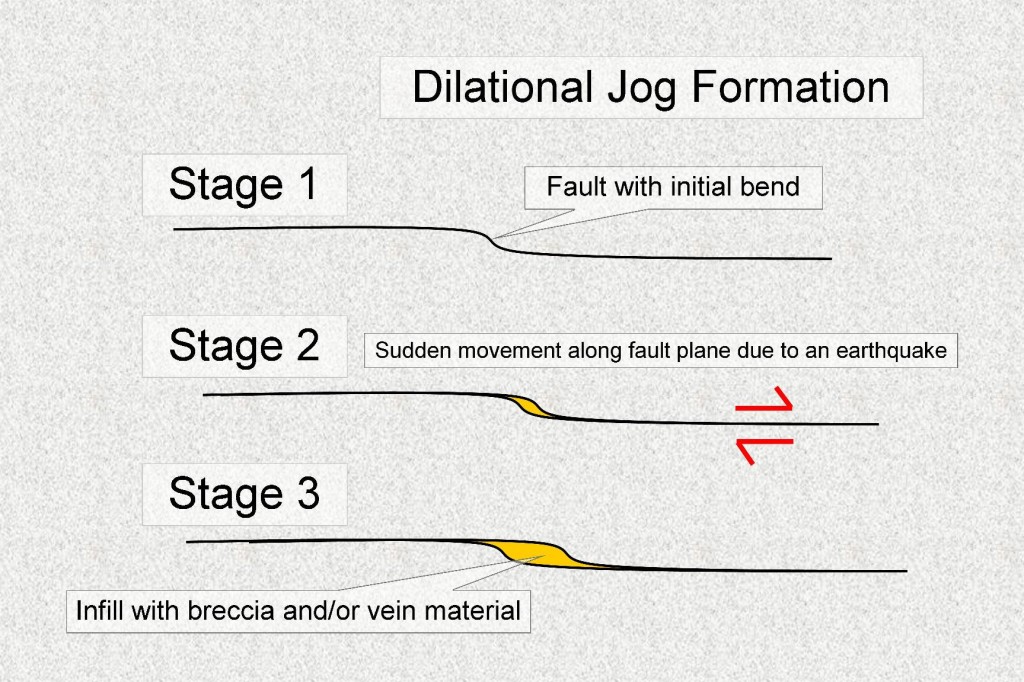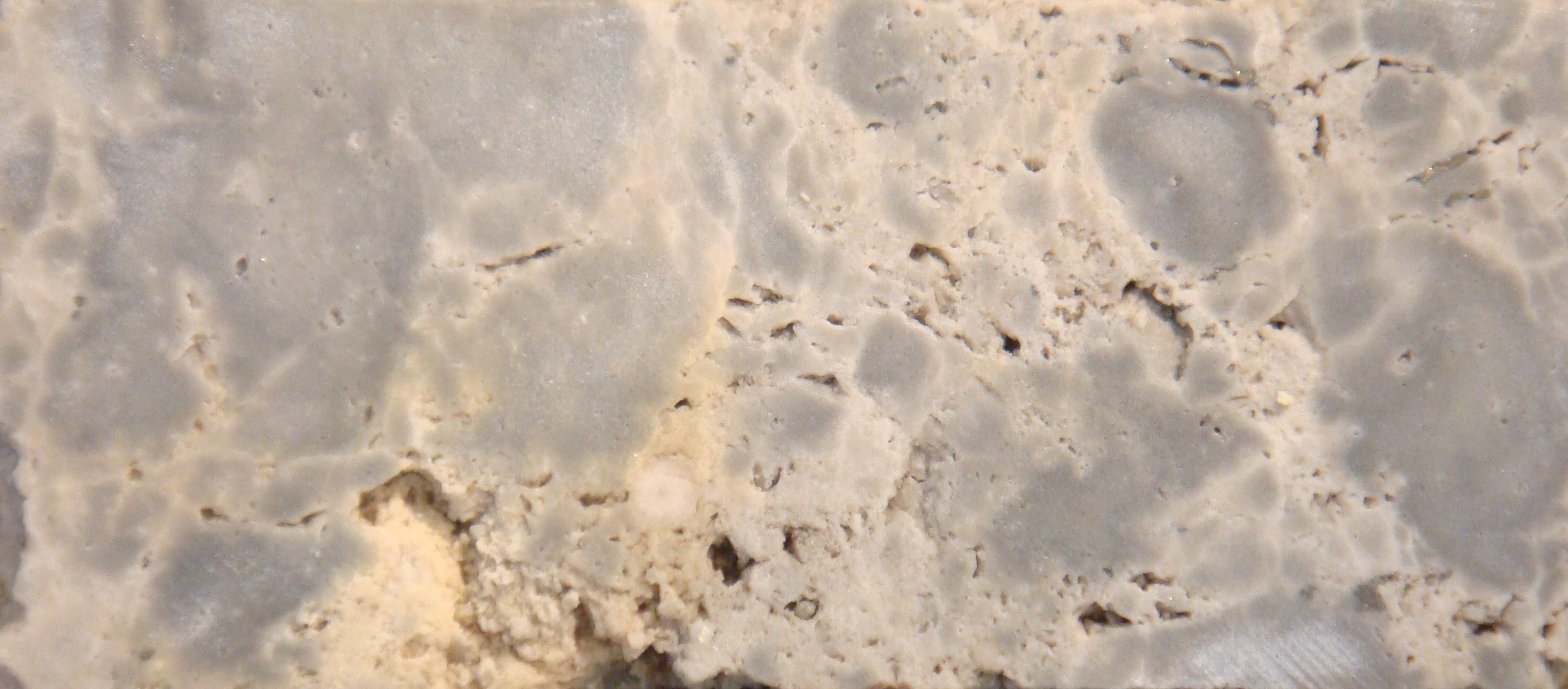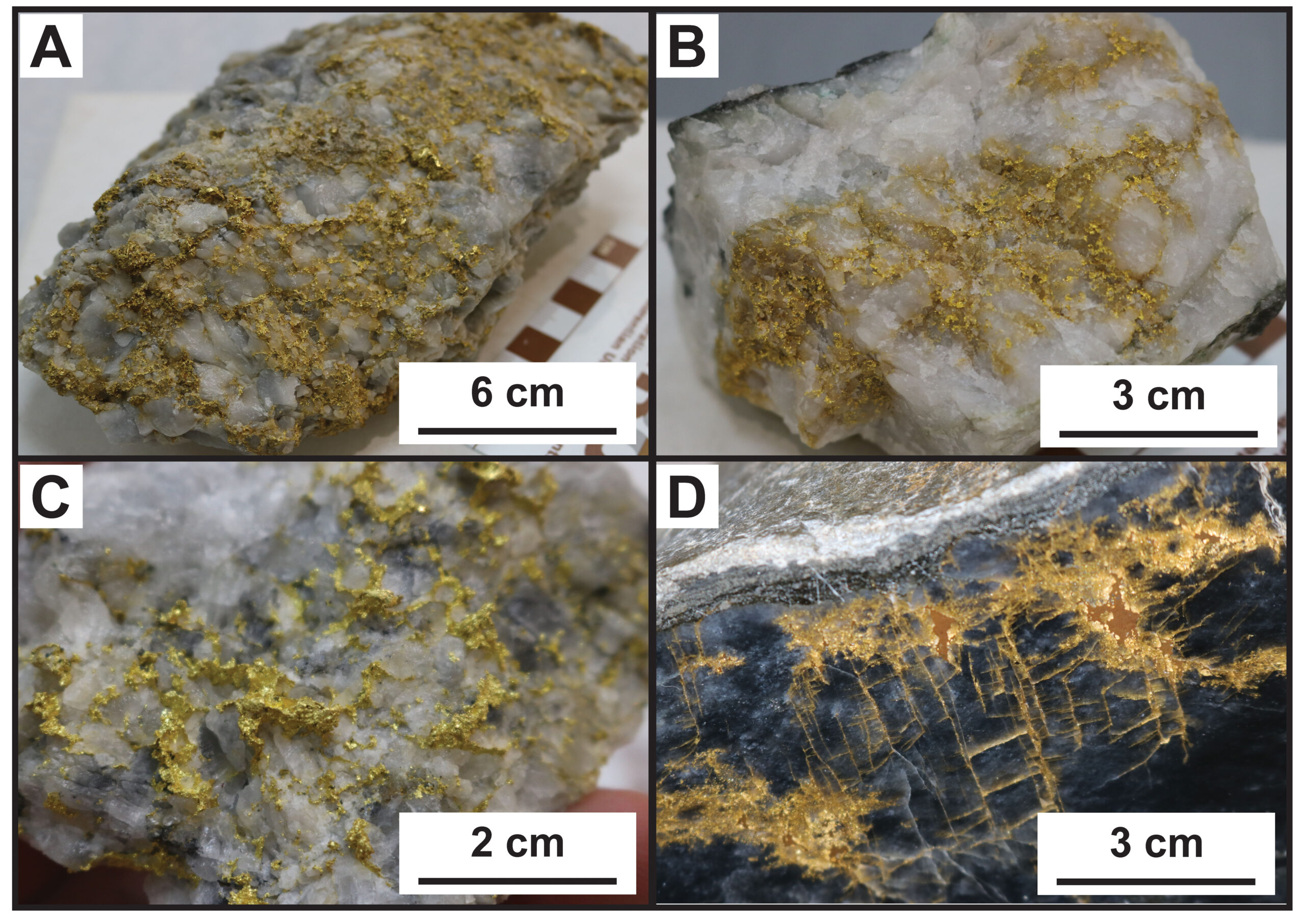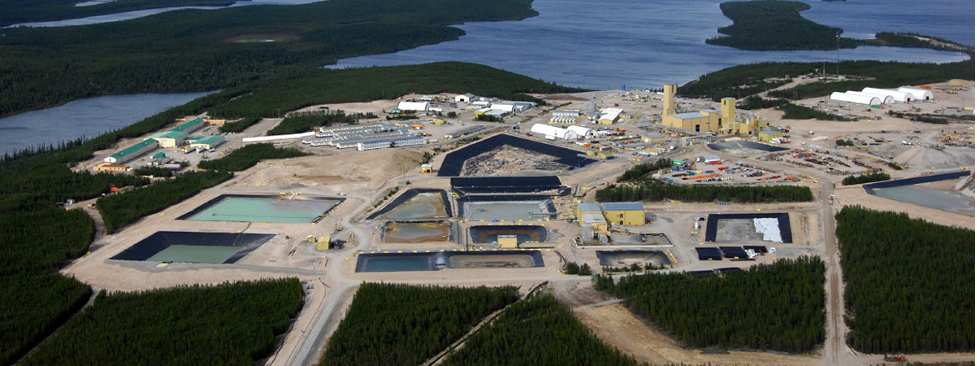Further exploration drilling in the area should focus on identifying the location of any high grade or bonanza grade shoots along the structure. The discovery of such shoots could turn a marginal deposit into a highly profitable one.
[box type=”info” align=”aligncenter” ]Disclaimer: This is an editorial review of a public press release and may include opinions or points of view that may not be shared by the owners of geologyforinvestors.com or the companies mentioned in the release. The editorial comments are highlighted so as to be easily separated from the release text. Please view the full release here.[/box]
VANCOUVER, BRITISH COLUMBIA–(Marketwired – Sept. 11, 2013) – Magellan Minerals Ltd. (TSX VENTURE:MNM) (OTCQX:MAGNF) (“Magellan”) is pleased to report that drill results have been received from six additional diamond drill holes recently completed at the Coringa project located in the southern part of Para state in northern Brazil. Coringa is located in an area of excellent infrastructure and is situated just 20km east of the main BR-163 highway and the Curua – Novo Progresso power line.
These holes are part of the drill program announced in March (see press release dated 12th March 2013) and partially reported on 29th August 2013. They were designed to test certain portions of the resource that were designated as Inferred resources.
[box type=”note” align=”aligncenter” ]There are three main categories of mineral resources; measured, indicated and inferred. We have provided a description of the different types of resources in our article Classification of Mineral Resources and Reserves. Basically, an inferred resource, like the one Magellan recently tested, is a mineral resource having the lowest level of geologic knowledge and confidence. The inferred resource at Coringa is 534,000 ounces gold. That is over half of the total resources of 1.1 million ounces of gold at Coringa. So the purpose of the drilling was to convert some of the inferred resources into either indicated and/or measured, as this adds value to the deposit by providing greater confidence in the numbers.[/box]
Highlights include:-
- 3m @ 12.58 g/t gold in hole 176 and 2.2m @ 4.91 g/t and 0.5m @ 8.78 g/t gold in hole 178 from the Mae de Leite zone. Hole 176 is the deepest hole drilled so far in the Mae de Leite block and extends the depth of the zone to a vertical depth in excess of 200m. The zone remains open at depth.
- 1.7m @ 12.05 g/t gold from hole 179 at Serra which was drilled in the southern portion of the Serra zone. The zone remains open at depth and to the south
- 2m @ 7.05 g/t gold in hole 174 from the Come Quieto zone representing the best and deepest drill intersection from Come Quieto to date. The zone remains open at depth
[box type=”note” align=”aligncenter” ]Below is a cross-section obtained from Magellan’s corporate website showing the 3m @ 12.58 g/t Au interval. Compared with deposits in other parts of the world, the reported drill-hole intersections at the Coringa project are relatively thin and of modest grade. This style of mineralization would be best suited to relatively small-scale, underground narrow-vein mining methods. If done properly, mining of veins such as these can be profitable.[/box]

The six holes reported here, which total 1,455m, were drilled to a maximum depth of 300m and were largely designed to test the inferred resources at depth and down dip at the Come Quieto, Mae de Leite and Serra zones. All of the holes intersected mineralized vein material.
Of particular note are the results from the Mae de Leite zone which is located 1km WSW of the Serra zone and 2.5km NW of the Meio zone. Hole 176 at Mae de Leite cut 3m @ 12.58 g/t gold approximately 100m below hole 96 which previously intersected 1.3m @ 7.89 g/t gold. Hole 178 similarly intersected 2.2m @ 4.91g/t gold 90m below hole 101 which previously cut 3.6m @ 0.85 g/t gold (see maps and sections on website). These holes have extended the grade and the vertical depth of Mae de Leite to more than 200m, and suggest that the zone remains open at depth.
[box type=”note” align=”aligncenter” ]Whenever you see this statement “remains open at depth” keep in mind that gold mineralization doesn’t always continue on forever at depth. For example in epithermal deposits, gold mineralization is normally restricted to the “boiling zone”, which is confined to a certain depth interval with a corresponding specific temperature and pressure.[/box]
Hole 179 at Serra was drilled in the southern part of the zone and intersected 1.7m @ 12.05 g/t gold confirming that the Serra zone remains open at depth to the south (see long section on website). The strike length of the Serra structure is now 1.35km in length. The most southerly hole at Serra which was drilled as part of this program (see press release dated 29th August 2013), was hole 161 which cut 1.5m @ 3.09 g/t gold including 0.5m @ 8.03 g/t gold.
[box type=”note” align=”aligncenter” ]Further exploration drilling in the area should focus on identifying the location of any high grade or bonanza grade shoots along the 1.35km-long Serra structure. The discovery of such shoots could turn a marginal deposit into a highly profitable one. High grade ore shoots are generally steeply plunging narrow zones within the plane of a mineralized quartz vein. Because of their narrowness they are difficult to discover with drilling methods alone. High grade ore shoots normally occur within a vein where a sudden opening up of the rock has allowed a pulse of hydrothermal fluids to be injected into the resulting void or conduit. This generally occurs where a bend in the fault/vein plane exists, which are known as dilational jogs. Bends such as these can be identified using the resistivity method of geophysical exploration. Below is a diagram of how an ore shoot is formed within a dilational jog of a fault/vein plane. [/box]
[/box]
Hole 174 at Come Quieto intersected 8m @ 2.05 g/t gold including 2m @ 7.05 g/t gold. The hole is the best hole drilled to date at Come Quieto and was drilled at the southern edge of the zone approximately 50m south and 40m down dip of hole 122 which previously cut 3m @ 5.1g/t gold and 20m north of hole 120 which intersected the mineralized structure but returned only low gold values including 0.6m @ 1.52g/t gold and 0.6m @ 0.97g/t gold (see map on website). The mineralized zone at Come Quieto remains open at depth.
The complete summary of significant intersections is as follows:-
| Hole ID | From (m | ) | To (m | ) | Interval Width (m)* | Gold (g/t | ) | ||
| Come Quieto | |||||||||
| DDH 174 | 170.0 | 178.0 | 8.0 | 2.05 | |||||
| Incl. | 171.0 | 173.0 | 2.0 | 7.05 | |||||
| DDH 175 | 202.1 | 202.6 | 0.5 | 1.01 | |||||
| 204.0 | 204.5 | 0.5 | 1.15 | ||||||
| 283.3 | 283.8 | 0.5 | 1.55 | ||||||
| Mae de Leite | |||||||||
| DDH 176 | 205.8 | 206.3 | 0.5 | 3.82 | |||||
| 207.1 | 210.1 | 3.0 | 12.58 | ||||||
| DDH 178 | 141.8 | 144.0 | 2.2 | 4.91 | |||||
| 151.0 | 152.2 | 1.2 | 1.65 | ||||||
| 160.8 | 161.3 | 0.5 | 8.78 | ||||||
| Serra | |||||||||
| DDH 177 | 183.5 | 184.0 | 0.5 | 0.80 | |||||
| 186.0 | 186.6 | 0.6 | 0.68 | ||||||
| DDH 179 | 213.0 | 214.7 | 1.7 | 12.05 | |||||
| 1 | All holes were drilled at between -55° and -75°. Dips of the intersected structure at Come Quieto, Mae de Leite and Serra are not known, and intersection widths are not necessarily true widths |
| 2 | True widths at Serra and Mae de Leite are estimated at 75-95% of the drill intersections |
| 3 | True widths at Come Quieto are estimated at 60-80% of the drill intersections. |
| 4 | Holes 169-173 were condemnation holes specifically designed to test the proposed sites for the plant and tailings disposal. None of the four holes intersected significant mineralization. |
[box type=”note” align=”aligncenter” ]The interval widths reported here are apparent widths (or thicknesses). Therefore, the true widths (or thicknesses) could be significantly less. For a complete run down on apparent widths vs true widths read our article.[/box]
[box type=”note” align=”aligncenter” ]It is good to see that Magellan is looking ahead with the drilling of “condemnation” holes. There is nothing worse than finding out at a later date that the processing plant and tailings dam has been built on high grade ore![/box]
Commenting on the results of the 2013 infill drill program at Coringa, Alan Carter, President and CEO commented “the recent drill program at Coringa was designed to test the boundaries of the known mineralization at the Serra, Mae de Leite and Come Quieto zones and extended the mineralization in several directions particularly to depth in all three zones. This round of drilling has built on our previous work which demonstrates that Coringa is one of the largest, high grade undeveloped gold deposits in Brazil”.
Holes were drilled at between 55 and 75 degrees from horizontal. All core samples (NQ diameter) were cut with a diamond saw and one-half of the core placed in bags, numbered and sealed then sent via a secure transport agency to the Company’s office in Itaituba before shipping via secure transport to ACME preparation laboratory in Itaituba for sample preparation. Core samples were crushed down to 2 mm and a 1 kg split was pulverized to better than 85% minus 200 mesh. From Itaituba, ACME sent the pulp samples to Santiago, Chile for assaying. Gold analyses were conducted on 30g representative sample cuts using fire assay with an atomic absorption finish. ACME is an ISO 9001 registered laboratory and has a quality control program in place which includes the insertion of standard, blank, and duplicate samples, as well as conducting repeat analyses.
Magellan’s QA/QC program also includes the insertion of standards, field duplicates and blank material in the sample sequence with the normal core samples to monitor sampling variances, laboratory precision and accuracy.
[box type=”note” align=”aligncenter” ]It looks like Magellan has its QA/QC program covered. However my only concern here is that each sample consisted of a halved NQ core. Core diameters come in various diameters. NQ is one of the smallest diameter drill-cores. If the gold mineralisation is coarse and not well dispersed then samples need to be large to ensure that the sample is representative of the rock being sampled. HQ sized drill-core would have been a better choice. You can read more about diamond drill-hole drilling in our article.[/box]
This press release was reviewed by Guillermo Hughes, B.Sc., a member of the AIG and the AUSIMM, a qualified person in compliance with National Instrument 43-101.
Magellan Minerals (TSX VENTURE:MNM)(OTCQX:MAGNF) is a TSX Venture Exchange listed exploration and development company with two advanced gold properties in the Tapajos Province of northern Brazil. The Coringa project is currently the subject of a Feasibility Study and contains Measured and Indicated resources of 561,000oz of gold (3.2Mt @ 5.5g/t gold) and Inferred resources of 534,000oz of gold (5.5Mt @ 3.0g/t gold). The Cuiu Cuiu project contains 100,000oz of gold in the Indicated category (3.4Mt @ 1.0g/t gold) and 1,200,000oz of gold in the Inferred category (31Mt @ 1.2g/t gold).
[toggle title=”We’ve skipped some of the boilerplate. You can read it in here.” state=”close” ]
Neither the TSX Venture Exchange nor its Regulation Services Provider (as that term is defined in the policies of the TSX Venture Exchange) accepts responsibility for the adequacy or accuracy of this release.
This news release contains forward-looking statements. Forward-looking statements address future events and conditions and therefore involve inherent risks and uncertainties. Actual results may differ materially from those currently anticipated in such statements. Particular risks applicable to this press release include risks associated with achieving production on the project within the parameters identified in the economic assessment, the ability of the project to generate significant cash flow to the company and earnings to the shareholders of the company. These statements are subject to risks due to regulatory, technical, economic and other factors. In addition there is no guarantee that additional exploration work will result in significant increases to resource estimates. The reader is referred to the Company’s most recent annual and interim Management’s Discussion and Analysis for a more complete discussion of such risk factors and their potential effects, copies of which may be accessed through SEDAR at http://www.sedar.com.
[/toggle]
[box type=”success” align=”aligncenter” ]Have a company or release you’d like us to look at? Let us know though our contact page, through Google+, Twitter or Facebook.[/box]






